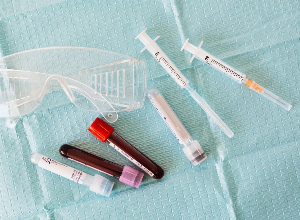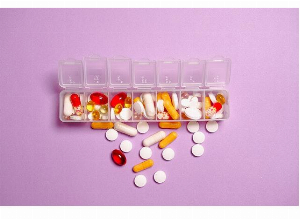Iron deficiency: Symptoms and causes, how can it be prevented and monitored?
Published Dec 4, 2021 • By Claudia Lima
Iron is a mineral that plays an important role in our organism: it is essential for many physiological processes. Iron deficiency is one of the most common causes of anemia. More than 1.5 billion people suffer from iron deficiency worldwide.
What are the symptoms of this deficiency and its consequences? How can it be prevented?
To find out, read our article!

Iron is an essential trace element. It is one of the compounds of hemoglobin (about 70% of the body's iron), a protein in red blood cells that carries oxygen to all the cells; and of myoglobin, a protein found in the muscles that delivers large amounts of oxygen to these organs. Moreover, iron contributes to the production of adenosine triphosphate (ATP), a molecule that provides the energy necessary for chemical reactions in cells, and therefore, for their functioning. It also makes it possible to synthesize DNA and transcribe certain messengers RNA (mRNA).
Iron is absorbed in the duodenum, the upper part of the small intestine. It is stored mainly in the liver and is recycled, when the cells that contain it die, by other cells called macrophages; the liver and macrophages contain iron in a protein called ferritin. As iron is part of hemoglobin, it is mainly used in the bone marrow, where red blood cells are produced.
A distinction should be made between serum iron (present in the blood without counting blood cells) which corresponds to the iron circulating in the body, and the iron contained in ferritin, which corresponds to the body's iron reserves. Serum iron can be linked to transferrin, a protein in the blood that allows iron to enter cells.
The human body does not produce iron on its own. Therefore, its level depends on the quantity of food containing iron, consumed by the person. This explains the existence of iron deficiency.
What is iron deficiency? How can the level of iron be measured?
Iron deficiency appears when there is a lack of iron in the body. Thus, the functions performed by the iron are faulty. As one of its main roles is to compose hemoglobin, iron deficiency induces underproduction of hemoglobin which results in the decrease in the level of hemoglobin in the blood, the red blood cells then carry less oxygen to body tissues. This is called iron deficiency anemia (due to insufficient iron). Anemia can have other causes.
According to the World Health Organization (WHO), hemoglobin values are considered low when they are below 13 g / dl in men, 12 g / dl in women and 11 g / dl in pregnant women.
During pregnancy, blood volume increases. Pregnant women therefore need more iron for their organs to function properly. In children, the normal amount of hemoglobin varies at each stage of growth.
During anemia, several blood tests may be prescribed to find out if it is due to iron deficiency. The results are a good indicator of a person's nutritional status. It is best to do the blood test in the morning, after fasting for at least 8 hours, and not to drink alcohol before the test.
The elements that will be measured are:
- Serum iron: between 0.65 and 1.8 g / l,
- Transferrin (transports iron through blood): between 2 and 4 g / l, sometimes measured as “total iron binding capacity”. An increase is a sign of iron deficiency (the body produces more transferrin in the attempt to compensate for iron deficiency),
- Ferritin (the iron reserve): between 18 and 270 µg / l in men, 18 and 160 µg / l in women, 7 and 40 µg / l in children. A decrease is an important sign of iron deficiency,
- The level of hemoglobin, minimum 13 g / dl in men, 12 g / dl in women and 11 g / dl in pregnant women,
- Average blood volume (the size of red blood cells): between 80 and 95 fl. Iron deficiency anemia is called "microcytic", which means that it produces red blood cells that are smaller than average.
What are the reasons for iron deficiency?
Once the diagnosis of iron deficiency anemia is confirmed, the attending physician should investigate the cause. First, the doctor questions the patient about the food he or she eats, in order to assess whether iron intake is sufficient (eg: vegan or vegetarian diet), then about any visible (heavy periods, bleeding between periods) and invisible (digestive bleeding) blood loss.
Another mechanism that can lead to iron deficiency is reduced iron absorption due to chronic or autoimmune condition of the digestive tract. Ulcerative colitis and Crohn's disease are chronic inflammatory bowel diseases that decrease iron absorption.
To be certain of these causes, additional tests can be carried out to look for blood in the stool and / or urine, as well as a gynecological examination, an endoscopy or colonoscopy. A multidisciplinary approach with the participation of such specialists as a gynecologist, a gastroenterologist or a urologist is necessary to establish the diagnosis and receive medical care.
What are the symptoms of iron deficiency?
Iron deficiency aneemia can cause various symptoms. Pregnant women and children are particularly vulnerable to iron deficiency, which creates an increased risk of maternal and child mortality. The prevalence of aneemia remains high around the world, especially in low-income settings.
What are the symptoms?
- Unusual fatigue, reduced physical strength,
- Dyspnea, shortness of breath,
- Pale skin and mucous membranes,
- Dizziness, vertigo,
- Headaches,
- Rapid or irregular heartbeat,
- A change in the appearance of the nails, hair loss,
- Skin pruritus (unpleasant sensation that causes the need to scratch),
- Lack of motivation,
- Loss of libido,
- Cognitive disorders (losing concentration, forgetting the words, intellectual slowness),
- Postural hypotension (dizziness, loss of consciousness, falling when changing position from sitting or lying down to standing).
The situation opposite to iron deficiency, is called iron overload. The main cause is thought to be hemochromatosis, a genetic disease in which the intestine absorbs all the iron from the food instead of only part of it. In this case, iron becomes toxic for the organs.
How can iron deficiency be treated?
To overcome iron deficiency which developed due to an unbalanced diet, you should increase your iron intake by focusing on foods that are rich in it: red meat, offal, fish, seafood, legumes, whole grains, sesame seeds, spirulina, walnuts, hazelnuts, almonds, parsley, dark chocolate or spinach. You should limit your tea and coffee consumption and be careful with strict vegan diets.
In some cases, you can also be prescribed iron supplements, for example iron tablets. When the loss of iron exceeds its absorption from the digestive tract, intravenous iron infusion can be considered. As an exception, blood transfusion may be performed at the start of treatment, especially if anemia has occurred suddenly (excessive bleeding) or if the symptoms are not well tolerated.
Along with prescribing iron supplements, the physician should treat the cause of anemia, that is, the cause of iron loss, which can be due to peptic ulcer, uterine fibroid, a colon polyp, celiac disease, etc.
Follow-up visits are set up, to make sure the symptoms have improved after a few weeks of treatment.
When anemia has developed due to iron deficiency, and not because of a hemorrhage, it can be an indicator of poor nutrition and can have consequences on other aspects of nutrition in general. In children, we can observe poor growth, weight loss, low birth weight, or on the contrary, excessive weight and obesity, lack of concentration and energy for school exercises and physical activities. This has a negative impact on children's education and decreases work productivity in adults, with social and economic consequences for the person affected and his or her family.
Public health strategies at the global level aim at preventing and fighting anemia by means of improving dietary diversity as much as possible, fortifying foods with iron (but also with folic acid and other micronutrients), distributing food supplements containing iron and combating malaria, one of the symptoms of which is iron deficiency.
Give it a like and share your thoughts and questions with the community in the comments below!
Take care!
Sources:
Rapport d'évaluation, bilan de la carence martial, has-sante.fr
Le fer : bienfaits, sources, aliments, mensonges, passeportsante.net
Fer : rôle, carence, dosage dans les aliments, surdosage et conséquences, sante.journal des femmes.fr
Fer, transferrine, ferritine, et calcul de la capacité de fixation du fer (TIBC), groupeproxim.ca
Reconnaître une anémie par carence en fer, ameli.fr
Anémie, OMS, who.int
Comments
You will also like

What are the dangers associated with the over-the-counter sale of certain medicines?
Dec 19, 2020 • 6 comments

 Facebook
Facebook Twitter
Twitter

